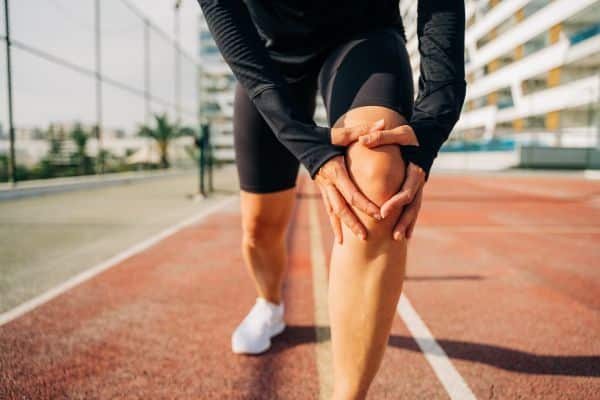According to the Agency for Healthcare Research and Quality, approximately 600,000 knee replacements are performed each year in the United States. After a total knee arthroplasty it is recommended that patients begin skilled physical therapy within one to two weeks of the surgical procedure. Patients will generally arrive to therapy with moderate swelling and pain as well as decreased stability in stance, secondary to weakness and/or inflammation. For this reason, patients will generally arrive to skilled physical therapy the first time using a rolling/standard walker to ambulate.
The therapist will focus on improving function and decreasing pain first and foremost. This is accomplished through passive stretching and manual therapy, including joint mobilizations of the patellofemoral and tibiofemoral joints as well as soft tissue mobilization. Soft tissue mobilization is performed to decrease pain and inflammation through the promotion of blood flow. It also increases extensibility of soft tissue and decreases build-up of scar tissue. Joint mobilizations are performed to augment and maintain accessory motions of each joint to enable proper joint movement and therefore aids to expand range of motion, most notably knee flexion and extension of the knee. It is pivotal to attain full knee extension as soon as possible post-surgery, and generally knee flexion will increase to normal over a period of two to four months.
The patient will begin to build strength immediately, following recommended course of treatment with physical therapist. Initially this can be accomplished through basic table exercises. Once the patient demonstrates improved ability to weight-bear with decreasing pain and increased stability in stance, the patient will then begin to focus on single-limb stance activities. During this time period, the patient will also transition to walking without an assistive device. This is accomplished by progressing from a walker to a standard cane and then to no assistive device, as tolerated by patient. Patients will be given a home exercise program which will include low-level stretching and strengthening exercises to be performed at home on a daily basis. As a patient continues to make progress and begins to ambulate without antalgic gait, therapeutic exercises will then be progressed to include strengthening machines such as a leg press. A patient may begin stationary bike once he/she achieves approximately 100 degrees of knee flexion to enable a full revolution on stationary bike without compensation, for example hiking his/her hip to enable leg to perform a full circle.
As patient continues to progress their range of motion and strength, focus will turn towards increasing their function to normal which will also depend on occupation, hobbies, and interests of patient. Treatment at this stage, will shift to focus on walking without a limp and squatting, lifting, and kneeling with proper body mechanics; which will be of utmost importance during this phase of rehabilitation. Kneeling is often a scary concept and can cause anxiety secondary to fear of pain, but is an obtainable goal following a knee replacement surgery. Successful outcome after surgical procedure is generally considered by patient attaining 115-130 degrees of knee flexion, full knee extension, and the ability to perform occupational and recreational activities without complaint of pain or compensation, which could lead to the break-down and/or injury of another area within the body.
Although the thought of having your knee replaced can be daunting, living with pain that does not allow you proper quality of life is much worse. Each patient is unique in their ability and every injury is patient specific. It is highly recommended that patients be evaluated by a licensed physical therapist so that their treatment is tailored to their needs.
Best wishes,
The Progressive Therapy Team

